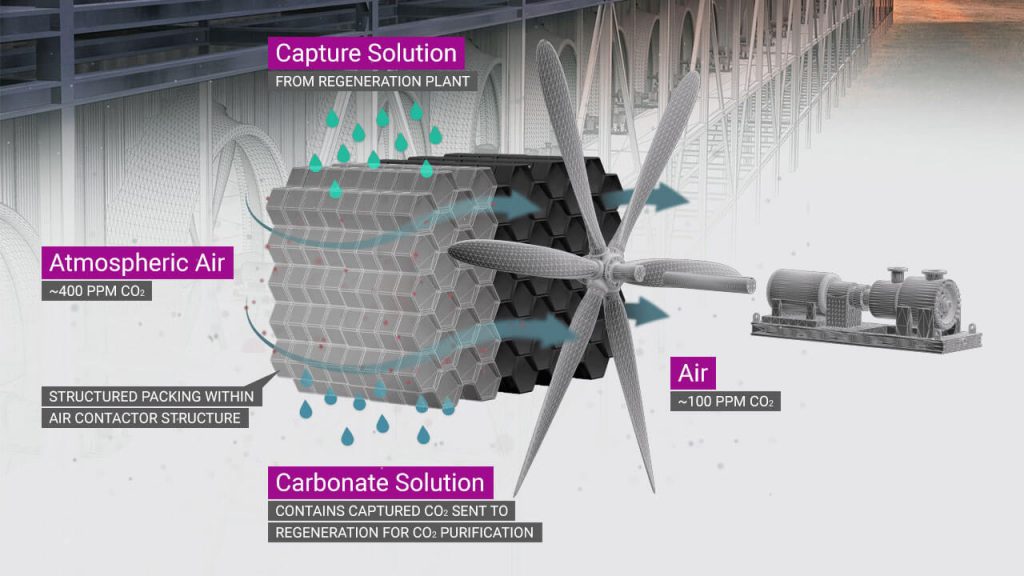
Carbon Engineering Ltd. (CE), a clean energy company based in Canada, has developed “an industrially scalable direct air capture technology, which can remove CO₂ directly from the atmosphere at an affordable price point,” according to CE’s website.
Direct air capture is the process of taking carbon dioxide out from the air and then storing it. CE uses water and energy to capture atmospheric carbon. Their website explains, “This CO₂ can be stored underground to compensate for emissions too costly or challenging to eliminate at source or can be converted into fuels using our AIR TO FUELS™ technology.”
To see how CE’s direct air capture works and find out more about their AIR TO FUELS™ technology, visit https://carbonengineering.com/.
The company is working to reduce the amount of clean water that is used in the process and has been able to increase the non-potable water use to more than 90 percent.
Steve Oldham, Chief Executive Officer, Carbon Engineering Ltd., explains that “removing carbon dioxide from the atmosphere is no longer an option, it’s a necessity… action is needed now.”
Bill Gates was one of CE’s early investors but since CE has investors that include three oil giants (Chevron, BHP and Occidental Petroleum), critics of the partnerships have been skeptical of the move. Dan Kammen, Professor of Energy from University of California Berkley, is one of those critics. “Partnering with an oil company is absolutely a step in the wrong direction.” He believes green energy is the answer and that there are other ways to “bring carbon out of the air and they’re called trees and trees are cheap and plentiful and they have lots and lots of co-benefits. And the more we invest in preserving our forests, expanding our wetlands and making agriculture smarter and smarter, we get all the benefits of direct air capture at a fraction of the cost.” (Source: Bill Gates and Big Oil back this company that’s trying to solve climate change by sucking CO2 out of the air)
Fiona Wild, BHP Vice President of Climate Change and Sustainability, explains that CE is only one part of the solution. “We need more renewables, more direct air capture. We need more carbon capture and storage. We need more nature-based solutions. We need more informed policy development because the challenge of climate change means that the time for picking winners is gone. This is about taking an all-of-the-above approach because the challenge is so great.”